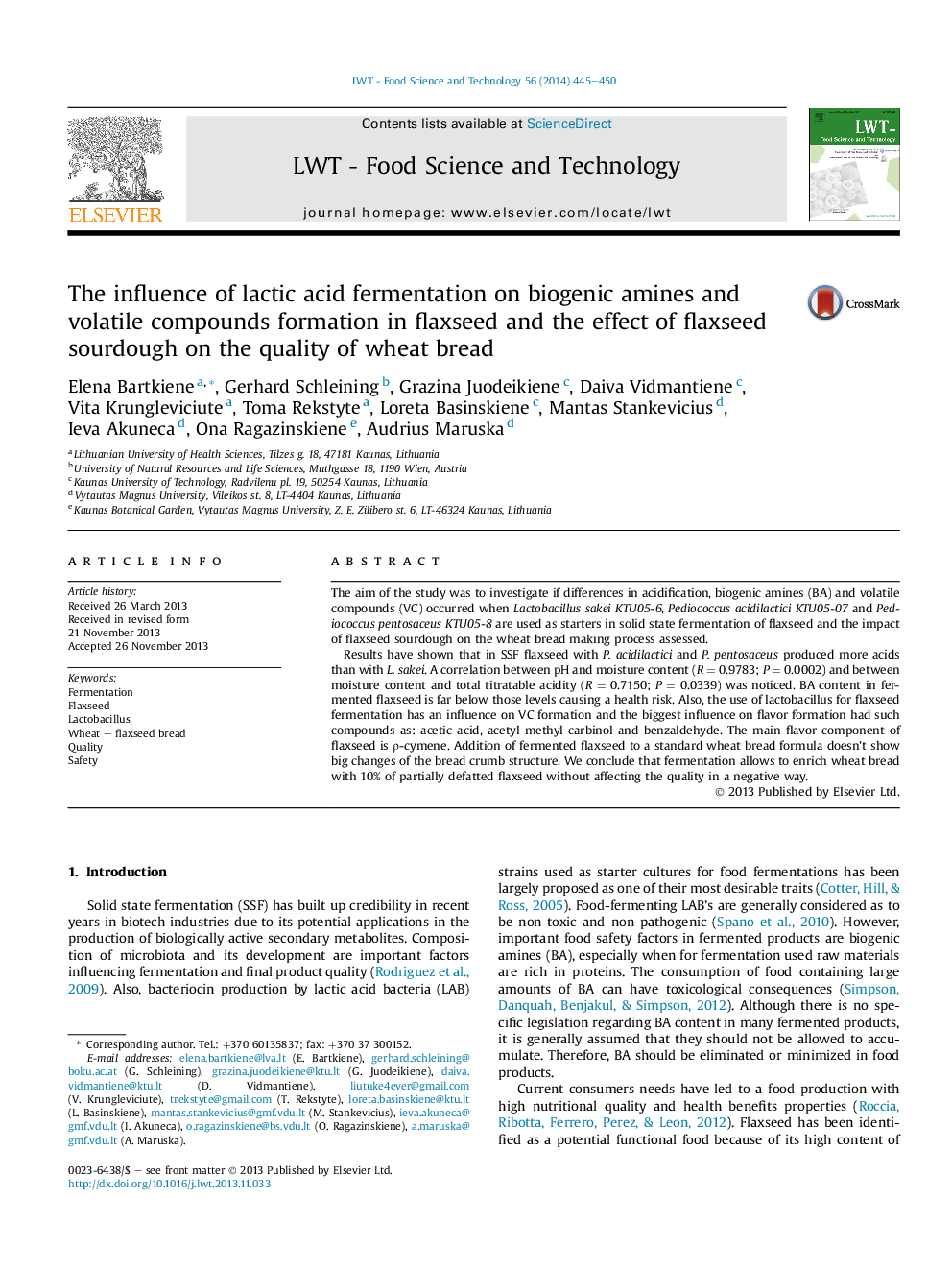| Article ID | Journal | Published Year | Pages | File Type |
|---|---|---|---|---|
| 6404358 | LWT - Food Science and Technology | 2014 | 6 Pages |
â¢In flaxseed Pediococcus acidilactici and Pediococcus pentosaceus produce more acids than Lactobacillus sakei.â¢The biogenic amines concentration in the fermented flaxseed is low.â¢The main flavor component of flaxseed is Ï-cymene.â¢Fermentation allows to enrich bread with 10% of partially defatted flaxseed.
The aim of the study was to investigate if differences in acidification, biogenic amines (BA) and volatile compounds (VC) occurred when Lactobacillus sakei KTU05-6, Pediococcus acidilactici KTU05-07 and Pediococcus pentosaceus KTU05-8 are used as starters in solid state fermentation of flaxseed and the impact of flaxseed sourdough on the wheat bread making process assessed.Results have shown that in SSF flaxseed with P. acidilactici and P. pentosaceus produced more acids than with L. sakei. A correlation between pH and moisture content (R = 0.9783; P = 0.0002) and between moisture content and total titratable acidity (R = 0.7150; P = 0.0339) was noticed. BA content in fermented flaxseed is far below those levels causing a health risk. Also, the use of lactobacillus for flaxseed fermentation has an influence on VC formation and the biggest influence on flavor formation had such compounds as: acetic acid, acetyl methyl carbinol and benzaldehyde. The main flavor component of flaxseed is Ï-cymene. Addition of fermented flaxseed to a standard wheat bread formula doesn't show big changes of the bread crumb structure. We conclude that fermentation allows to enrich wheat bread with 10% of partially defatted flaxseed without affecting the quality in a negative way.
